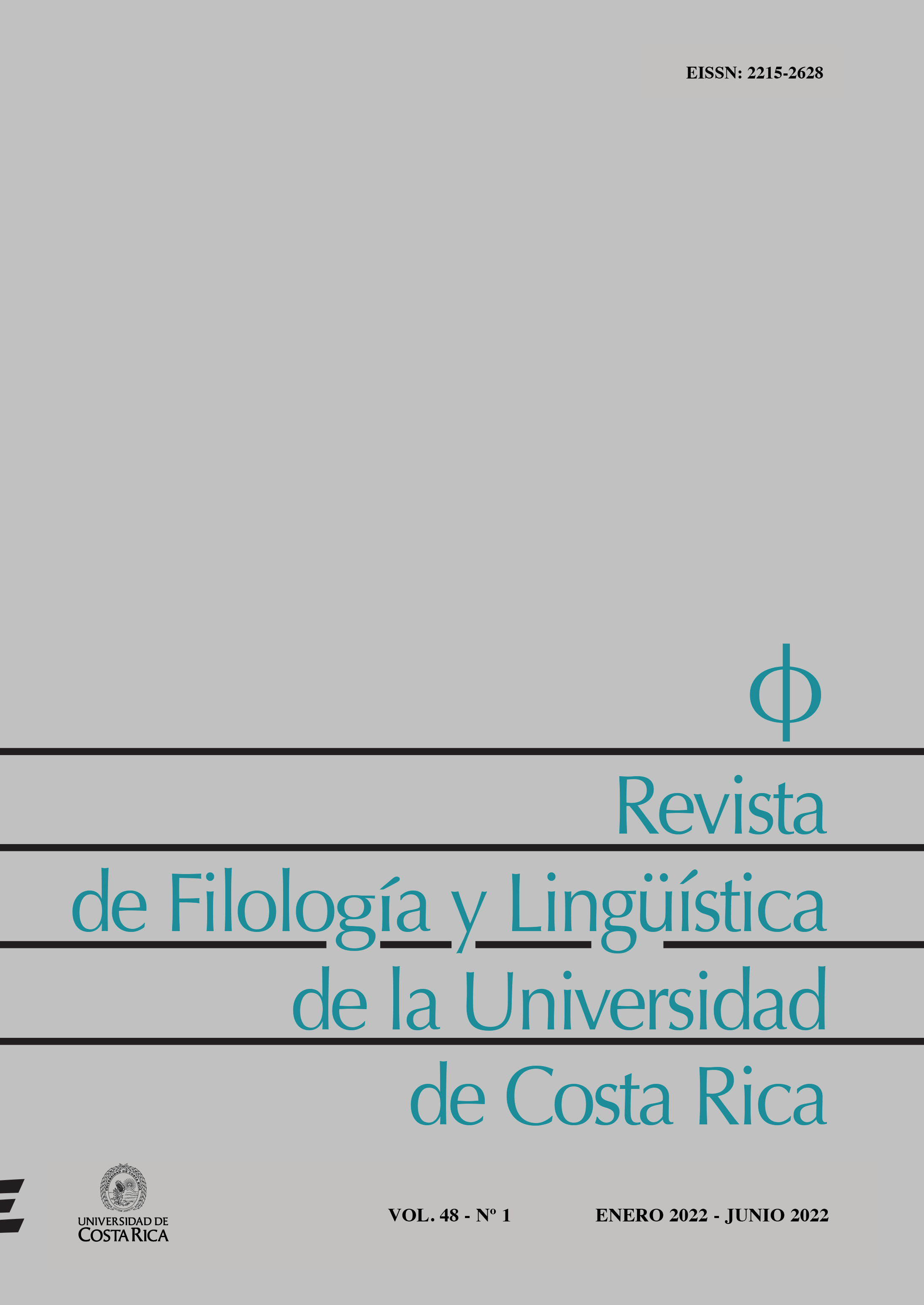Resumen
Gymshark es una compañía británica de ropa deportiva que, en menos de 10 años, se ha convertido en una empresa multimillonaria. Este éxito está ligado a su promoción mediante un discurso publicitario que enfatiza un sistema ético que la diferencia significativamente de otras empresas de ropa deportiva del mercado. Así, Gymshark emplea un discurso publicitario digital en redes sociales como Instagram o YouTube para llegar al público joven más inmediatamente. Este trabajo pretende analizar las técnicas persuasivas utilizadas en ocho anuncios de Gymshark sobre ropa y retos deportivos, especialmente el uso de herramientas cognitivas y axiológicas: metáforas y metonimias conceptuales, esquemas de imagen y uso del color. En consecuencia, este análisis sigue la teoría de la lingüística cognitiva (Lakoff y Johnson, 1980; Ruiz de Mendoza, 2002; Evans y Green, 2006), su aplicación al discurso publicitario (Forceville, 1996; 2008; 2009), las nociones axiológicas propuestas por Krzeszowski (1990) y ciertas consideraciones sobre el uso del color. Los resultados demuestran que la publicidad de Gymshark prioriza el uso de herramientas cognitivas para asociar los productos y la marca a valores axiológicos positivos más allá de los estrictamente ligados al fitness; así, estas constituyen un factor clave para atraer al consumidor hacia la marca.
Citas
Barthes, R. (1964). Éléments de sémiologie. Communications, 4(1), 91-135.
Cook, J. (2020). How Gymshark Became A $1.3 Billion Brand, And What We Can Learn. Retrieved from https://www.forbes.com/sites/jodiecook/2020/08/17/how-gymshark-became-a-13bn-brand-and-what-we-can-learn/?sh=26573b2376ed
Cortés de los Ríos, M. E. (2002). Cognitive semantics and axiology: a new proposal to study metaphor in economics advertising discourse. Revista alicantina de estudios ingleses, 15, 39-47.
Cortés de los Ríos, M. E. (2008). Estudio cognitivo del componente visual de mensajes publicitarios anunciados en la campaña de navidad. In R. Monroy & A. Sánchez (Eds.), 25 años de lingüística en España (pp. 507-514). [Digital version]. Retrieved from https://dialnet.unirioja.es/servlet/articulo?codigo=4653096.
Cortés de los Ríos, M. E. (2010). Cognitive devices to communicate the economic crisis: An analysis through covers in The Economist. Ibérica: Revista de la Asociación Europea de Lenguas para Fines Específicos (AELFE), (20), 81-106.
Cortés de los Ríos, M. E. & Azzahara, F. (2014). The construction of conceptual meaning in print footwear advertisements. LSP, Professional Communication, Knowledge Management and Cognition, 5(2), 4-23.
Evans, V. & Green, M. (2006). Cognitive Linguistics: An Introduction. Mahwah, NJ: Lawrence Erlbaum Associates.
Felices Lago, Á. & Cortés de los Ríos, M. E. (2009). A cognitive-axiological approach to print eco-advertisements in The Economist: the energy sector under scrutiny. Revista de Lingüística y Lenguas Aplicadas, 4, 59-78.
Forceville, Ch. (1996). Pictorial Metaphor in Advertising. London and New York: Routledge.
Forceville, Ch. (2008). Metaphor in Pictures and Multimodal Representations. In R. W. Gibbs (Ed.), The Cambridge Handbook of Metaphor and Thought (pp. 462-483). Cambridge: Cambridge University Press.
Forceville, Ch. (2009). Non-verbal and multimodal metaphor in a cognitivist framework: Agendas for research. In C. Forceville & E. Urios-Aparisi (Eds.), Multimodal Metaphor (pp. 19-45). Berlin: Mouton de Gruyter.
Goossens, L. (1990). Metaphtonymy: the interaction of metaphor and metonymy in expressions for linguistic action. Cognitive Linguistics, 1(3), 323-340.
Gymshark [@gymshark]. (2021). Be a visionary [Biography]. Instagram. Retrieved from https://www.instagram.com/gymshark/?hl=es
Gymshark Company. [Gymshark]. (September 13, 2019). RYAN GARCIA: THE FASTEST HANDS IN BOXING |Gymshark Motivation [Video]. YouTube. Retrieved from https://www.youtube.com/watch?v=1_b6YHfQssA&t=9s
Gymshark Women [@gymsharkwomen]. (2021). Hidden gems…#gymsharkwomen [Comment section]. Instagram. Retrieved from https://www.instagram.com/p/COTJvZmB4Qo/
Juhlin, L. & Soini, M. (2018). How do influencer marketers affect brand associations?: a semiotic Instagram study in the sports fashion industry. (Master Thesis). Kristianstad University. Retrieved from http://www.diva-portal.org/smash/record.jsf?pid=diva2%3A1223967&dswid=6105
Kress, G. & Van Leeuwen, T. V. (2001). Multimodal Discourse: The Modes and Media of Contemporary Communication. London: Bloomsbury Academic.
Krzeszowski, T. (1990). The axiological aspect of idealized cognitive models. In J. Tomaszczyk & B. Lewandowska (Eds.), Meaning and Lexicography (pp. 135-165). Amsterdam: John Benjamins.
Lakoff, G. (1987). Women, Fire and Dangerous Things: What Categories Reveal about the Mind. Chicago: University of Chicago Press.
Lakoff, G. & Johnson, M. (1980). Metaphors We Live By. Chicago: Chicago University Press.
Peña Cervel, S. (1999). Subsidiarity relationships between image-schemas: an approach to the force schema. Journal of English Studies, 1, 187-208.
Pérez Sobrino, P. (2017) Multimodal Metaphor and Metonymy in Advertising. Amsterdam and Philadelphia: John Benjamins.
Petrovici, I. (2014). Aspects of Symbolic Communications in Online Advertising. Procedia - Social and Behavioral Sciences, 149, 719-723.
Pike, S. (2019). 3 Ways Gymshark Is Smashing It On Instagram. Retrieved from https://minter.io/blog/3-ways-gymshark-is-smashing-it-on-instagram/
Ruiz de Mendoza, F. J. (2002). From semantic underdetermination via metaphor and metonymy to conceptual interaction. Theoria et Historia Scientiarum, 6(1), 107-141.
Ruiz de Mendoza, F. J. & Galera Masegosa, A. (2011). Going beyond metaphtonymy: Metaphoric and metonymic complexes in phrasal verb interpretation. Language Value, 3, 1-29.
Telišman, P. (2020). Utjecaj Instagrama na promociju brenda Gymshark. (Undergraduate thesis). Vern’ University of Zagreb. Retrieved from https://urn.nsk.hr/urn:nbn:hr:146:863074
Vatral, M. (2018). The Current Role Of Color Psychology In The Practice Of Gender Marketing. (Doctoral thesis). University of North Georgia. Retrieved from https://digitalcommons.northgeorgia.edu/honors_theses/38/.
Velasco, M. S. & Cortés de los Ríos, M. E. (2009). Persuasive nature of image schematic devices in advertising: their use for introducing sexisms. Revista Alicantina de Estudios Ingleses, 22, 239-270.


